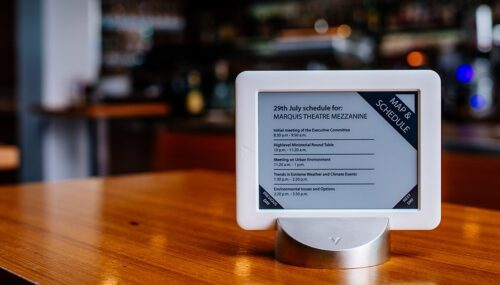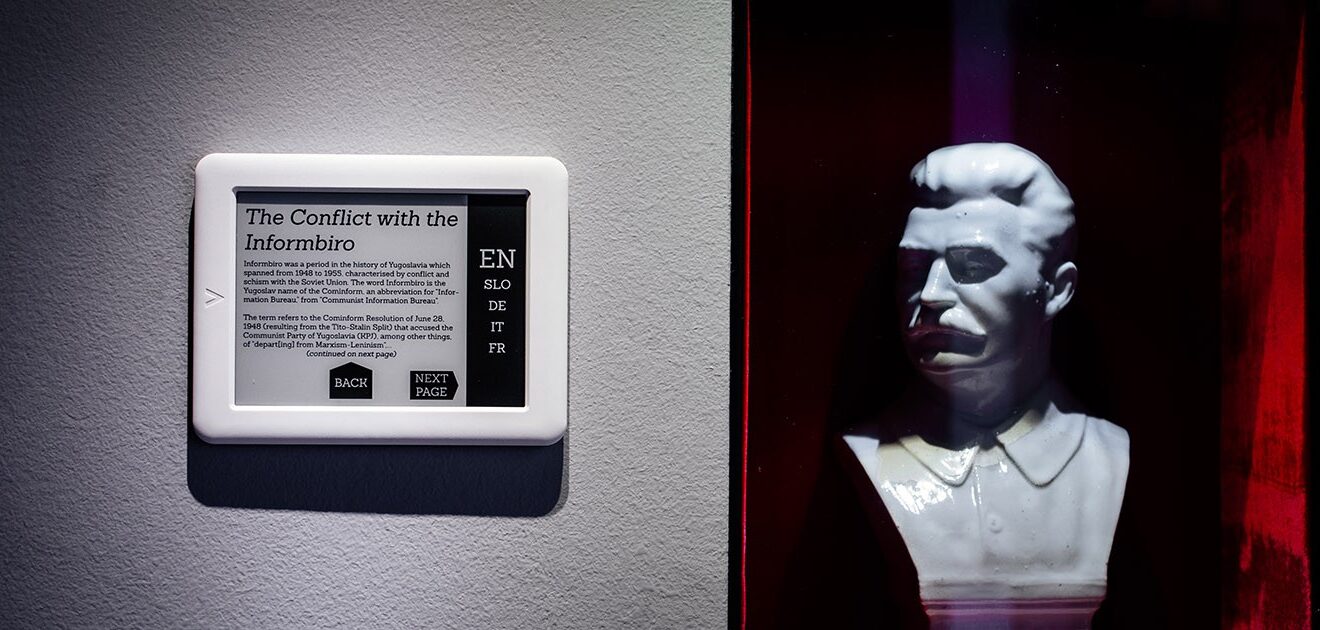

Digital signage: How Visionect transformed a museum into an interactive learning environment
Visionect, 7 Jul 2014
Museums are an excellent way of spending your time and learning something new in the process. But many of have problems fully engaging the visitor and serving different needs of the visitors at the same time. This can be resolved elegantly through the implementation of an interactive digital signage system.
Transform a museum a into a modern and interactive institution.
Museums often contemplate how to make their exhibitions more engaging and interesting to its visitors, and how to attract those that do not visit these institutions frequently. To do this, museums need to solve two main issues. They need a way of providing a better interactive experience, and means of catering to the different needs of the visitors.
The lack of interaction is probably the most frequent drawback. Most museums consist of exhibited items accompanied by short (usually printed) information tags or wall plaques, offering little or no interaction with the visitor. Unguided tours thus turn into an act of walking around and reading. Guided tours are better, but ill-suited for those looking for detailed information about one or more particular items. Those looking for further information would like to stroll around at their own pace, freely stopping at will. But in this case, one loses the help of a curator, meaning it is much harder to access further information about a particular item.
There is a way of addressing these disadvantages by implementing a web-based interactive digital signage solution that better engages the visitors and caters to their different needs. Such a solution does not provide excessive video and audio input that can sometimes shift the focus away from the item itself, but still engages the visitor more than plain audio or video recordings and provides a greater amount of information even when museum staff is not present.
Creating an interactive environment in museum with electronic paper
Visionect decided to test how these problems could be minimized by equipping a museum with Wi-Fi connected V-Tablets that display detailed information about the exhibited items. V-Tablet and V-Platform are perfect for the job. With its e-paper display from E Ink, V-Tablet takes great pride in its excellent visibility, robustness and long battery life. These characteristics make the V-Tablet ideal for museum environment. Visionect also developed a demo application for the V-Tablet that provides an interactive museum experience and caters to the needs of different visitors.
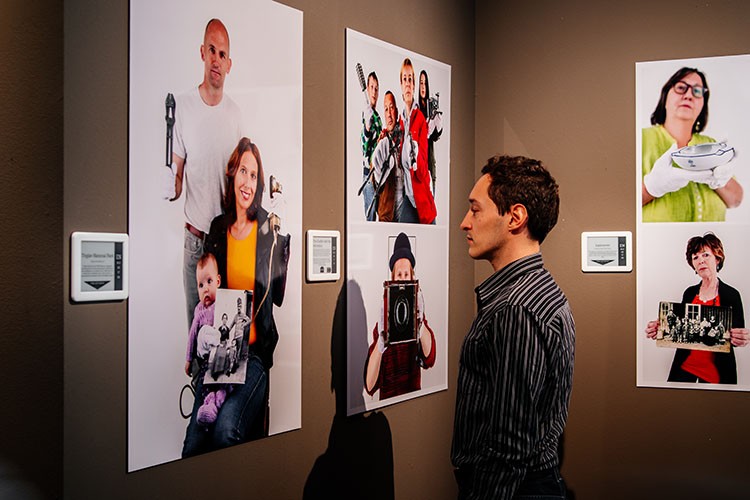
V-Tablet enables visitors to learn more about exhibited items.
V-Tablets were used instead of standard printed information sheets and plaques which usually offer very limited information. In its default mode, Visionect’s application displays basic information about the exhibited item. Because of this, V-Tablets were extremely inconspicuous when not needed and did not disrupt the overall look and feel of the museum.
But for visitors seeking interactive experience and more information, V-Tablet and its application were a welcome upgrade. At a touch of the screen, the web-connected tablet provided a great amount of further information, drawing from museums own resources or even Wikipedia entries. What is more, the application has the possibility of displaying information in a variety of languages, which greatly eases the museum’s visit for international visitors.
All V-Tablet content is web-based, meaning that no information is stored on the tablet itself. V-Tablet displays the information through the use of wireless network. This eases the process of updating considerably, since changes need to be entered only on the server.
A solution beneficial for both visitors and staff
In this way, the V-Tablet and its custom application took care of the needs of individual visitors and their specific needs. Those who only required basic information took just a quick glance at the screen, while those seeking detailed information were able to pause and touch the screen to learn more.
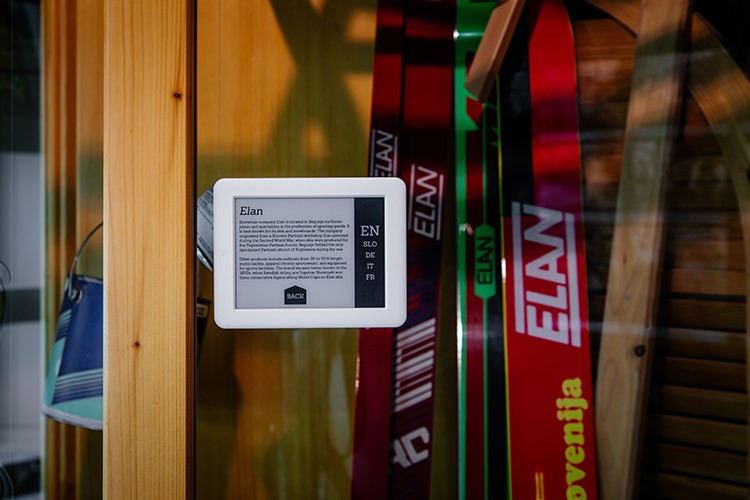
Digital displays provide much more information than standard printed tags or wall plaques.
The V-Tablet provided a vast amount of additional information about exhibited items and enabled the visitors to browse through the museum at their own pace.
V-Tablet’s application provided a vast amount of additional information about exhibited items and, more importantly, enabled the visitors to browse through the museum at their own pace while still gathering an unprecedented amount of information, regardless of the absence of the curator.
But such a setup is not beneficial only for the visitors, but for the museum staff as well. V-Tablet’s application is completely web-based (developed with standard HTML5, CSS and JavaScript technologies) and devices themselves simply display the information. Because of this, it is possible to employ standard web statistics services to track the popularity of each tablet in a way similar to measuring the popularity of a website.
Visionect’s web application uses Google analytics – the most widely used statistics service – to track the frequency of visitor’s interaction with the tablet. Analytical tool gave the museum staff an option to review which items are visited the most. What is more, there is even an option of gathering direct feedback from the visitors. One could add a rating application which would give the visitors an option to rate the appeal of every exhibited item. In this way, staff could check which items either do not receive their fair share of attention or do not appeal to visitors and maybe implement some changes.
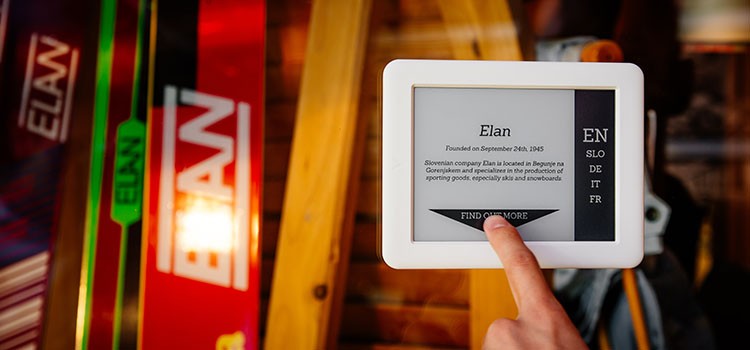
Further information about an item can be accessed via V-Tablet’s touchscreen.
The implementation of V-Tablet and V-Platform also greatly eases the switching of the exhibited items. All data shown on the tablets is stored on the Visionect servers and uploaded to the devices via Wi-Fi connection, which means that updating a particular device is done simply by entering the content for the new artifact on the server. Gone is the need for physical exchange of information sheets or plaques, meaning there is also no waste.
The advantages of Visionect’s solution in a museum environment
Visionect’s V-Tablet based on the e-paper technology is especially well suited for use in museums. Next to all the advantages for the visitors (greater knowledge at will, ease of use) and museum staff (analytics) mentioned above, there are several qualities that make V-Tablet ideally suited for this purpose:
- V-Tablet’s E Ink display offers superb visibility regardless of the ambient light. What is more, it does not pollute the space with any excess light, thus retaining the often intimate atmosphere of museums.
- They are extremely reliable, robust, dust and water resistant, meaning they can easily handle everyday use without much maintenance.
- Since everything is stored on the Visionect server, upgrading or replacing content is easy. Use of Web technologies (HTML5, CSS, JavaScript) makes further development easy and inexpensive.
Museums are a great example of an environment in which digital signage done right can greatly benefit both the visitors and the staff. Visionect’s V-Tablet and V-Platform solved many of the museum’s problems with minimum trouble.
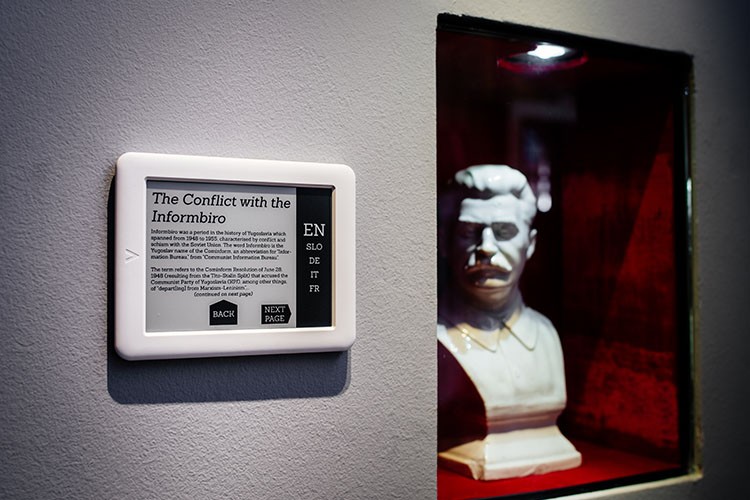
V-Tablet’s e-paper display does not emit excessive light so it does not disturb the museum’s atmosphere.
Such a setup is even more ingenious and user-friendly because it implements familiar technology. The omnipresence of touchscreens (smartphones, tablets) ensures that the visitors will be inherently drawn to use them everywhere they come across them. The implementation of digital signage inside a museum even adds a certain appeal for the tech-savvy younger generations, who are well at home with such devices.
A successful implementation of Visionect’s V-Tablet and V-Platform showed how a museum can be transformed into a modern and interactive institution, thus creating a pleasant and welcoming learning environment for every single visitor. At the end of the day, that is the whole point of a museum.
Would you like to know more?
As we have demonstrated above, implementing V-Tablets inside a museum can vastly improve the visitors’ experience. Would you like to work with us and develop such a solution? Or did reading this article give you further ideas about how Visionect’s e-paper technology could be used inside a business environment or at home? Do not hesitate to contact us. Together, we can develop a system for use inside a museum, or help you realize your own excellent ideas. With Visionect’s V-Platform and V-Tablet, the possibilities are vast.
Join us in creating e-paper solution of the future, or take a look at our blog to learn more about what you can do with our V-Platform and V-Tablet devices.
Tags

